


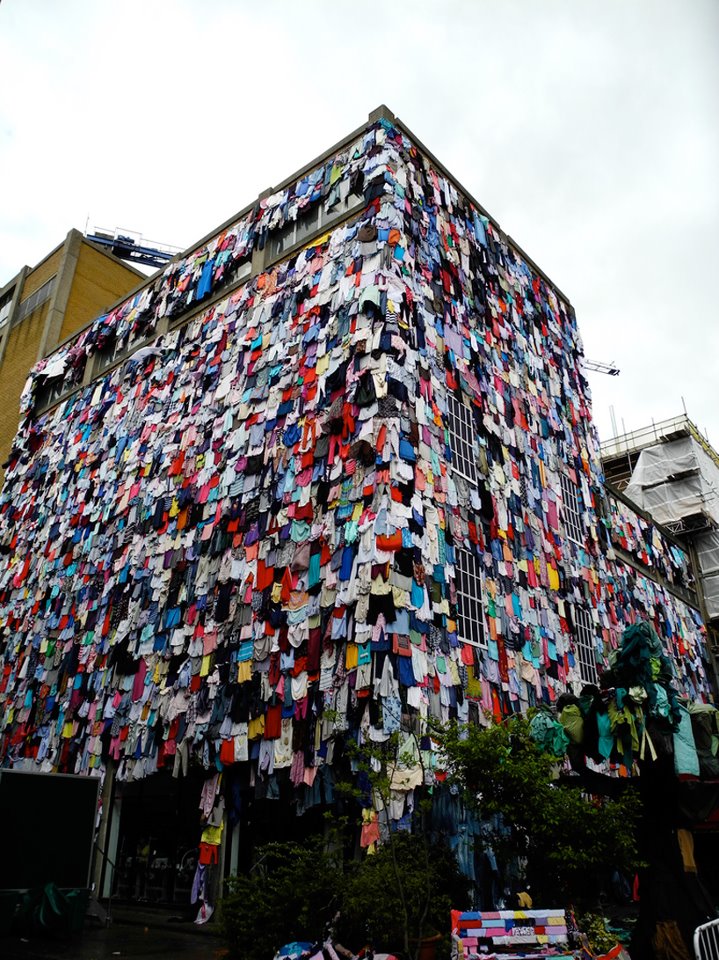
MARKS & SPENCER
shopping campaign

Frederik Heyman
CEREMONIAL FORMALITY
Frederik Heyman’s work is a balancing act incorporating multiple media – including video, installations and photogaphy – often in a digitally altered environment. In his work, Heyman explores memory and duration, using photogrammetry and 3D scanning to depict and represent the passage of time. The hallmarks of Heyman’s work are mechanical and technological: wires, wheels, scrolling LED marquees, metal frames, clamps, industrial lights, screens and cameras. Bodies–as opposed to humans–are subject to unusual dynamics with these technological trappings. In Ceremonial Formality (2020) a contortionist is encased in a metal cage while a spectator, hooked up to wires, looks on.

Sougwen Chung
愫君
Drawing Operations
Sougwen Chung is an internationally renowned multidisciplinary artist, who uses hand-draw and computer-generated marks to address the closeness between person-to-person and person-to- machine communication. She is a former researcher at MIT Media Lab and current Artist in Resident at Bell Labs and New Museum of Contemporary Art in New York. Her speculative critical practice spans installation, sculpture, still image, drawing, and performance. Drawing Operations Unit: Generation 1 is the 1st stage of an ongoing study of human and robotic interaction as an artistic collaboration.
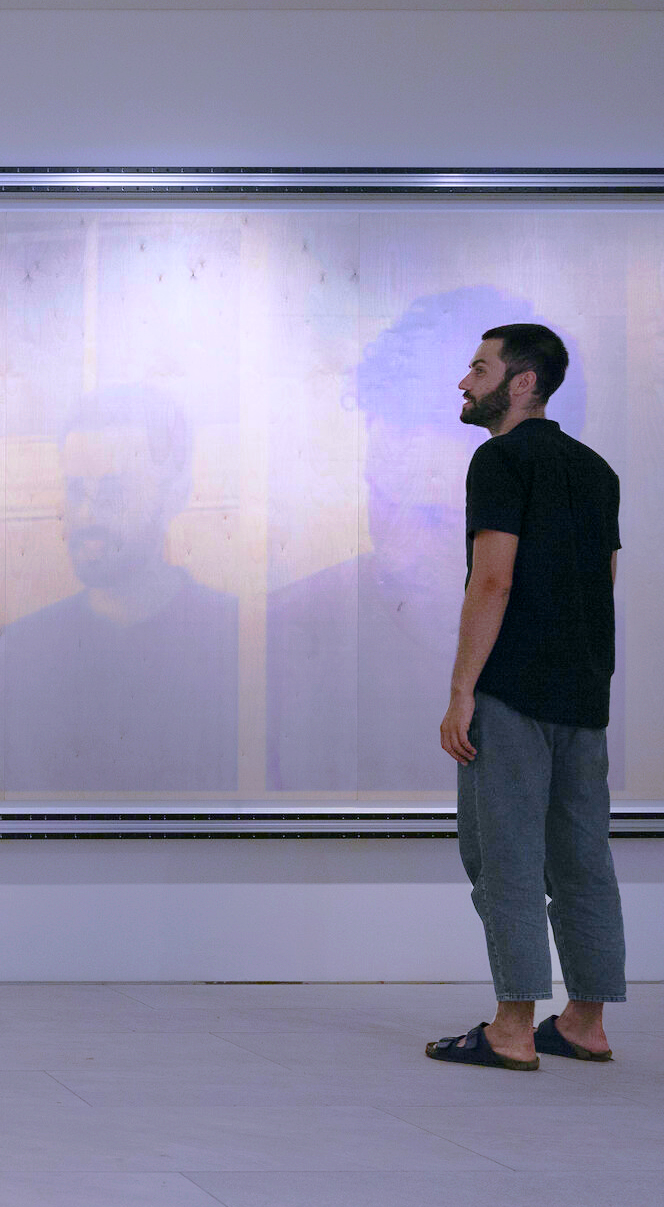
Random International
Presence and Erasure
Presence and Erasure is a portrait machine that explores the reality of automated facial recognition and how people relate to their self-image, instinctively and emotionally. Within a given spatial domain, the artwork constantly scans for faces in the vicinity and photographs them. When the artwork’s algorithm detects a certain quality within a photograph, this image is temporarily printed at large scale by exposing a photochromic surface to light impulses. Each automated portrait remains for little more than a minute, before gradually dissolving into blankness. RANDOM INTERNATIONAL began to combine transient mark-making with automated portraiture early on in their practice, in 2008. Presence and Erasure marks the latest development in this body of work and assumes a minimal, industrial aesthetic that references their earliest studies on this theme. The physical impact of facial recognition and machine vision is emphasised by the exposure of the printing process itself, contrasted against the aesthetic of the high resolution portraits generated. RANDOM INTERNATIONAL intend this as a counter to the perception of surveillance footage as always being low quality, aiming to create a deeper reflection on the nature of surveillance today as well as the resounding cognitive and emotional dissonances.

THOMAS HEATHERWICK
Puente rodante
El puente rodante tiene la particularidad de enrollarse sobre sí mismo para conciliar tanto la navegación fluvial en la cuenca de Paddington como la salida de la tienda Marks & Spencer. El objetivo era hacer movimiento, el aspecto extraordinario del puente. Un puente grúa que se abre lenta y suavemente hasta que se transforma de un clásico puente recto, en una escultura circular que se asienta en la orilla del canal.

Sheri Simons
After All
After All is a wooden, robotic interpretation of the Phonautograph, a 19th century apparatus created by the Frenchman, Édouard-Léon Scott de Martinville. His invention predated Edison’s phonograph by 17 years and promised a new kind of visual literacy for those who could learn to read, translate, and recite its mechanically created marks. The air pressure from a voice speaking into a cone pushed and deformed the surface of a sensitive diaphragm to which a boar’s bristle was attached. Inflection in the voice moved the diaphragm and the bristle touched a revolving soot-covered wheel, scratching marks in response to air pressure changes. The marks could be ‘read back’ by those literate in a sound-to-writing technique.

Richard Hoeck and John Miller
Mannequin Death
Jarring and violent yet strangely hypnotizing, the video references the Kantian sublime landscape and the “sex appeal of the inorganic,” which, the Italian philosopher Mario Perniola argues, marks the transition from an organic, bodily sexuality to an inorganic and artificial one.

Liu Xiaodong
Weight of insomnia
With his new series of paintings, Liu uses a machine programmed to capture movement in public spaces and translates this to marks on canvas. The machine has no heart, no desires, no ulterior motive. It does not sleep but obeys its instructions for as long as the artist decides. And yet the results have a strange power to move us. It seems that, despite all efforts, subjectivity can never truly be extinguished. Join Liu as he discusses this latest painting project, the conflict and changes in Chinese society that have influenced his artistic approach and how we might all be affected by the ‘weight of insomnia’.

Ricardo Bofill Architects
La Muralla Roja
In the context of La Manzanera, La Muralla Roja (The Red Wall), designed by Ricardo Bofill, embodies a clear reference to the popular architecture of the Arab Mediterranean, in particular to the adobe towers of North Africa. The Red Wall is like a fortress which marks a vertical silhouette following the outline lines of the rocky cliff.
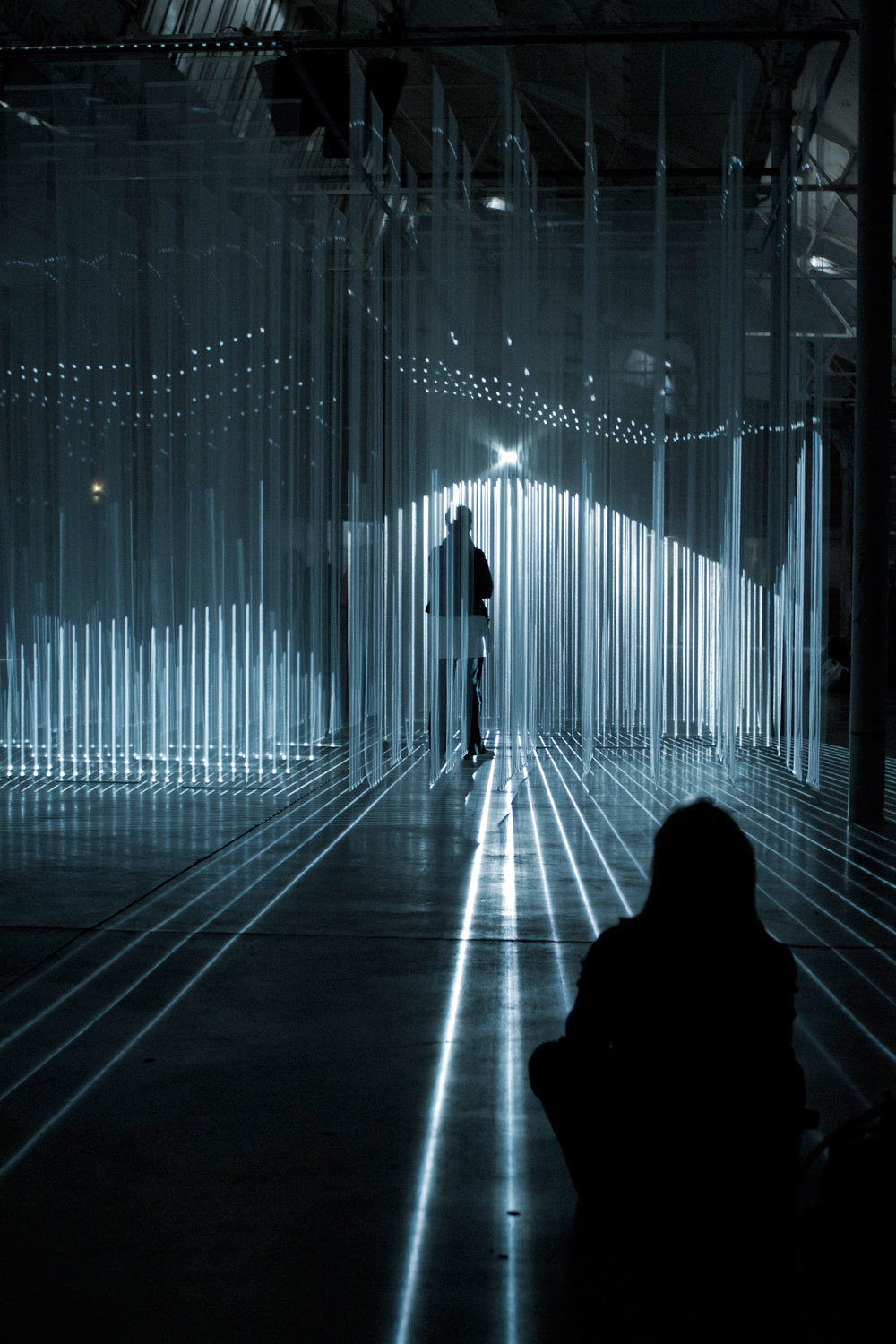
YANNICK JACQUET, JEREMIE PEETERS AND THOMAS VAQUIE
3DESTRUCT
3Destruct is an immersive installation, a large semi transparent cube that generates light an sound, and as the visitor walks through, he loses his landmarks in this non-linear universe that destroys any spacial coherence.

THOMAS HEATHERWICK
托马斯·赫斯维克
トーマス·ヘザーウィック
ТОМАС ХЕЗЕРВИК
Rolling Bridge
Le rolling bridge à la particularité de s’enrouler sur lui-même pour concilier à la fois la navigation fluviale du bassin Paddington et la sortie du magasin Marks & Spencer. L’objectif était de faire du mouvement, l’aspect extraordinaire du pont. Un pont roulant qui s’ouvre lentement et en douceur jusqu’à ce qu’il se transforme d’un pont droit classique, en une sculpture circulaire qui se trouve sur la rive du canal.

JULIA FULLERTON-BATTEN
Julia Fullerton-Batten is a worldwide acclaimed and exhibited fine-art photographer. Her body of work now encompasses twelve major projects spanning a decade of engagement in the field[…]Julia’s use of unusual locations, highly creative settings, street-cast models, accented with cinematic lighting are hallmarks of her very distinctive style of photography. She insinuates visual tensions in her images, and imbues them with a hint of mystery, which combine to tease the viewer to re-examine the picture, each time seeing more content and finding a deeper meaning. These distinctive qualities have established enthusiasts for her work worldwide and at all ends of the cultural spectrum, from casual viewers to connoisseurs of fine-art photography.

JESSE HOULDING
Loop Drawing Machine
The Loop Drawing Machine is a kinetic sculpture that uses magnets and iron filings to draw on paper. The friction of the iron on the paper both makes marks on the paper and pulls the paper through the machine; drawing a loop on a loop of paper. A chamber and auto-feed replenishes the iron as the magnets revolve past the feeder. Eventually the paper becomes a completely darkened by the overlapping marks.
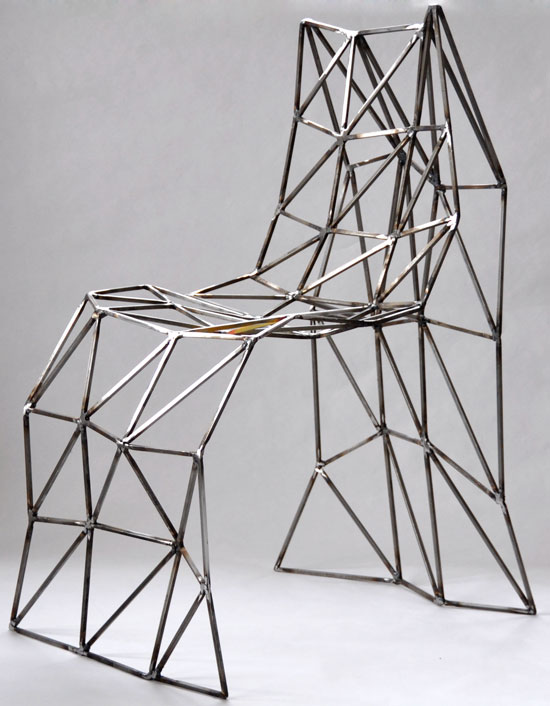
JULIAN MAYOR
Graziano Chair
The Graziano chair was inspired by computer generated wire-frame models, and by toughness coupled with fragility. Wire frame drawings express form though an economical use of marks, and with their own set of codes, they allow a viewer to look at the inside and outside of an object at the same time, and from many angles simultaneously.
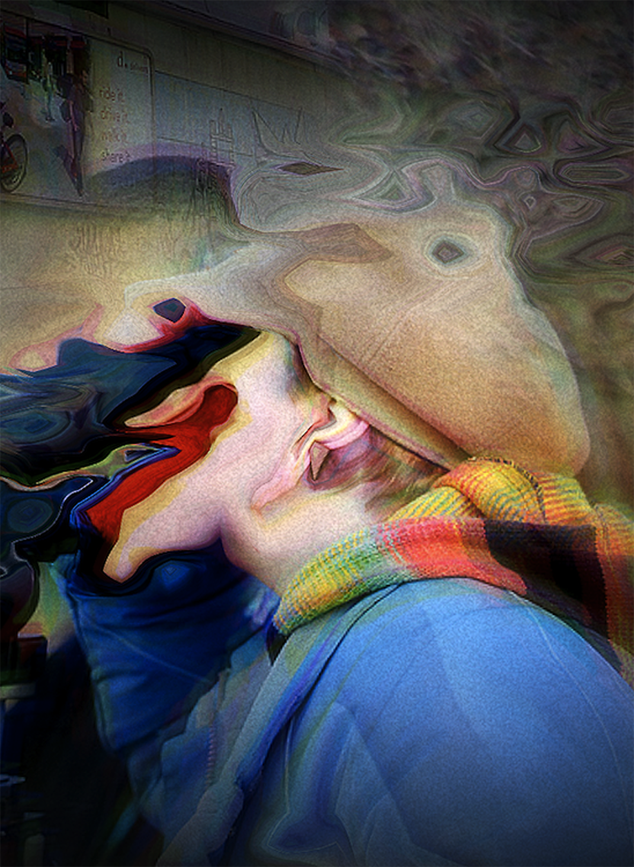
Matthias Dörfelt
Selective Memory Theatre
Selective Memory Theatre is a machine-like perception and memory installation, that thematises the desire to teach the non-forgetting digital memory to forget. It thereby covers the selectionistic nature of the individual mind, that marks the human sensing and remembering as the subjective and biased – but therefore human and functional – act that it is. The installation consists of two projections, the perception and the memory layer. Both will be explained in what follows.

Steven Holl Architects
Ecology and Planning Museums
Entering on the ground level to the ecology museum reveals a projection next to the restaurant and retail areas. an elevator takes guests to the top level where their descent through the three ecologies – earth to cosmos, earth to man, earth to earth – begins, connected through a series of ramps.
the earth to earth exhibit on the bottom floor features a plane that turns clockwise, moving slowly down towards the ocean ecology space appropriately situated under the reflecting pond of the exterior plaza. the earth to earth section contains four outdoor green terraces as temporary exhibit spaces that change with the seasons.The shared public square also marks the entrance to the planning museum where visitors are greeted by a large model of the eco-city and another temporary display area. a multimedia system makes the next sequence of program, the theory and practice zones, come to life with dynamic informative videos, images, and sounds, all located on the second level. mechanical escalators transport guests to the third floor where one-way display is turned into an interactive relationship with the viewer. this is accompanied by a 3D cinema and a restaurant with views out towards the sea. on the top storey one can find the green architecture, landscape and water resources exhibits as well as access to the vegetative roof-scape offering offering unmatched views.

haris epaminonda
le plateau
The exhibition at le plateau marks an important and new step in Epaminonda’s practice, which, as the title suggests, shall be seen as one large work building up over time through different volumes and chapters. For this occasion the artist has devised an extensive environment that occupies the cleared spaces of le plateau with a series of cubicles, platforms and screens conceived both as sculptures and presentation devices. Including other elements, films and sound—the soundscapes of the installation will be composed by the music duo “Part Wild Horses Mane On Both Sides”, with whom the artist often collaborated in the past—, the whole set exceeds the exhibition space itself with parallel and temporary appearances connecting the inside and outside of le plateau. Like an emphatic homage to the Japanese filmmaker Yasujiro Ozu, these performed interventions shape a kind of inhabited archipelago in constant evolution.


Luce Moreau
Landmarks
Landmarks est un projet d’anamorphose lumineuse mise en place dans les paysages vallonnés de la campagne slovène, autour de Maribor. Après avoir choisi dans le paysage un point de vue auquel elle restera fidèle, l’artiste, aidée de son équipe, installe selon des marques préalablement établies des systèmes de miroirs qui réfléchissent les rayons du soleil en direction de l’objectif.
Des formes géométriques diverses et génériques émergent alors d’un banal paysage : rectangle homothétique au cadre de l’image, diagonale joignant les deux extrémités. Les zones réfléchies dans le paysage sont comme autant de zones de résistance ; la lumière du soleil, dans son inclinaison naturelle, est ainsi déviée et par là-même transformée en signal. La relation entre la source de lumière et le photographe devient un dialogue privilégié, dont la lecture n’est possible que depuis le point de vue initialement choisi.
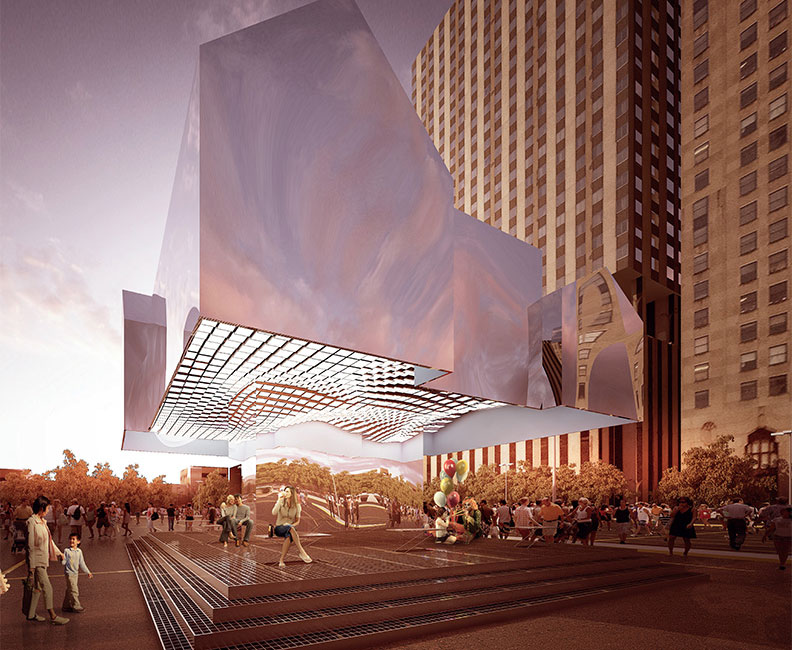
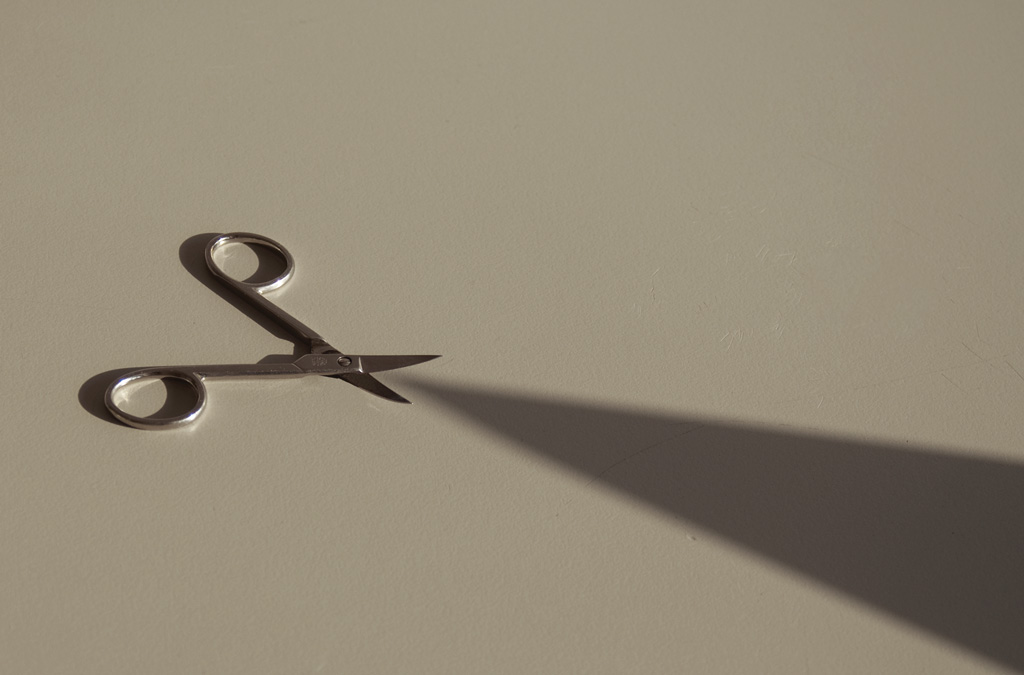

RICARDO BARRETO, MARIA HSU and AMUDI
feel Me tactile interactive bed
File Festival
“feelMe” is a work that for the first time remotely transmits the tactile sensation. Our work provokes the exploration of the sense of touch while promoting the interaction between two people mediated by a machine. The work is constituted of two surfaces, or “beds”: the first one (tactile transmission unit), in which one of the participants, layed down, imprints marks to its surface by pressing it with the weight and movement of the different parts of his/her body; these impressions will be captured and transmitted to the other participant, who lies in the second “bed” (tactile reception unit) and receives them simultaneously in the same positions and in proportional intensities, however, in negative, that is, when the surface in the first bed sinks, it rises in the second one, promoting a touch. The first body touches the second one, and the “beds” may be a few meters or thousands of kilometers apart from each other. Between the bodies, dozens of occult sensors, microcontrollers, engines (lineal actors), computers and a program that orchestrates that tactile communication. We allow the participant to experiment the possibilities of encounter between bodies through the digital world, with a different approach from the one provided by virtual reality. We want to explore the tactile perception separately in its “corporal way”, and only in future works to propose the expansion/extension of multimedia perception with the inclusion of tactile perception.

DENNIS OPPENHEIM
دينيس أوبنهايم
丹尼斯·奥本海姆
デニス·オッペンハイム
데니스 오펜하임
Деннис Оппенгейм
Reading Position for Second Degree Burn
“Reading position for second degree burn”, an experiment in which he sunbathed for five hours with a book on his torso. The Time, The Sun, the Light and the Book titled Tactics: Vol II, Cavalry Artillery, by German Colonel Balck: Would it be the Enlightenment of Iron and Fire? Is it the culture that marks our bodies as we mark horses? Or just a book that Dennis took to the beach and asleep forgot about his body?